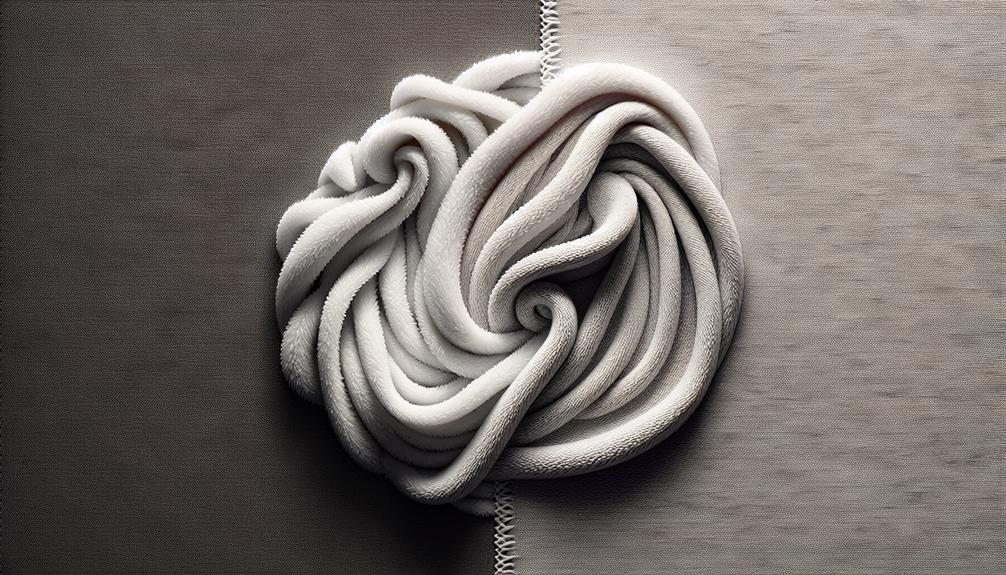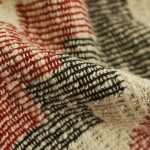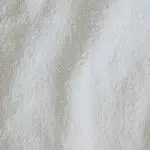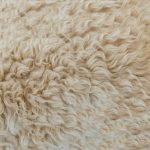I once heard someone liken choosing between French terry and cotton to deciding between a sturdy SUV and a reliable sedan. Both have their strengths, but which one suits your needs better?
French terry boasts a plush, looped interior that feels like a comforting hug on a chilly day, while cotton's smooth surface is a classic choice. But when it comes to durability and breathability, which fabric comes out on top?
Let's explore the world of French terry versus cotton to uncover the best pick for your wardrobe needs.
Table of Contents
Key Takeaways
- French Terry offers a plush texture and warmth, while cotton provides a smooth, breathable feel.
- French Terry is more durable and pill-resistant, while cotton may stretch and fray over time.
- French Terry is heavier and moisture-wicking, ideal for cooler climates, while cotton is lightweight and airy for hot weather.
- Choosing French Terry supports sustainability with less water and energy consumption compared to cotton.
French Terry: Definition and Characteristics
When it comes to French Terry, it's all about the unique texture and versatility it brings to clothing. French Terry is a knit fabric known for its looped pile construction on one side and a smooth surface on the other. This fabric is made from a blend of cotton and polyester, with the majority being cotton. The material origins of French Terry can be traced back to the early 19th century in France, where it was first produced.
The fabric construction of French Terry involves weaving together multiple yarns to create a fabric that's both breathable and absorbent. This construction allows French Terry to be lightweight and comfortable to wear, making it a popular choice for activewear, loungewear, and casual clothing. The unique texture of French Terry adds a touch of sophistication to everyday pieces, elevating them from basic to stylish.
Cotton: Overview and Properties
I'll start by explaining the fundamental properties of cotton and outlining its numerous benefits.
Cotton is a natural fiber known for its softness, breathability, and moisture-wicking properties, making it a popular choice for clothing.
Understanding these characteristics can help us appreciate why cotton is a favored material in various textile applications.
Cotton Properties Explained
Cotton, a versatile plant-based fiber, boasts a variety of properties that make it a popular choice in the textile industry. Here are three key properties of cotton:
- Breathability: Cotton is known for its breathability, allowing air to circulate and body heat to escape, making it comfortable to wear in warm weather.
- Absorbency: This natural fiber has high absorbency, effectively wicking moisture away from the body, keeping you dry and comfortable.
- Durability: Cotton is durable and can withstand frequent washing without losing its shape or quality, making it a long-lasting choice for various garments.
These properties contribute to cotton's widespread use and popularity in the textile industry.
Benefits of Cotton
Cotton's versatility and natural properties make it a highly sought-after material in the textile industry. The benefits of cotton extend beyond its comfort and breathability; its environmental impact is a critical aspect to ponder.
Cotton is biodegradable, meaning it can naturally decompose without releasing harmful chemicals into the environment, unlike synthetic fabrics. Additionally, cotton farming can be sustainable when practices such as crop rotation and limited pesticide use are employed. By choosing cotton products, consumers support sustainability practices that can help reduce the industry's overall environmental footprint.
Understanding the benefits of cotton not only guarantees we enjoy its comfort but also encourages us to make eco-conscious choices in our textile purchases.
French Terry Vs Cotton: Texture
When comparing French terry to cotton regarding texture, one can immediately feel the differences between the two fabrics.
French terry offers a looped, soft, and slightly stretchy texture, while cotton is known for its smooth and breathable feel.
These textural disparities play a significant role in how each fabric drapes and feels against the skin.
French Terry Vs Cotton: Texture
Comparing the textures of French terry and cotton reveals distinct differences that can influence the feel and functionality of clothing items. French terry, known for its looped pile on one side and a smooth surface on the other, offers a unique texture that's both soft and absorbent. On the other hand, cotton fabric, being a natural fiber, has a classic smooth texture that's lightweight and breathable.
Here are three key points to take into account when contrasting the textures of French terry and cotton:
- French terry's looped pile texture provides a plush and cozy feel perfect for loungewear and activewear.
- Cotton's smooth texture offers a crisp and clean appearance suitable for everyday wear and formal attire.
- The texture of French terry adds a casual and relaxed vibe to garments, while cotton's texture exudes a timeless elegance.
Fabric Feel Differences
The tactile experience of French terry and cotton differs greatly, impacting the overall feel of clothing items made from these fabrics.
French terry, known for its looped pile on the inside and smooth knit on the outside, offers a medium fabric weight that provides warmth without being too heavy. This weight gives it a cozy feel, making it a popular choice for sweatshirts and loungewear.
On the other hand, cotton, with its natural fibers, offers a lighter fabric weight compared to French terry. Cotton is prized for its softness level, providing a smooth and breathable texture that feels gentle against the skin.
Whether you prefer the plush comfort of French terry or the lightweight softness of cotton, each fabric offers a unique tactile experience.
French Terry Durability Vs Cotton
In my experience, French terry fabric tends to exhibit greater durability compared to cotton. This durability comparison is essential when considering the longevity of your clothing items. Here are three reasons why I find French terry to be more durable than cotton:
- Higher Stitch Density: French terry fabric often has a tighter knit and higher stitch density compared to cotton. This tighter construction makes it less prone to fraying or tearing, ensuring the fabric lasts longer even with frequent wear.
- Better Shape Retention: French terry has excellent shape retention properties, meaning it's less likely to stretch out or lose its form over time. On the other hand, cotton garments may lose their shape after multiple washes, leading to a shorter lifespan.
- Enhanced Resistance to Pilling: French terry fabric typically pills less than cotton, maintaining a smoother appearance for a more extended period. This resistance to pilling contributes to the overall durability of French terry garments.
Breathability: French Terry Vs Cotton
When it comes to breathability, French Terry and Cotton have distinct differences that affect comfort during wear.
Understanding how these fabrics breathe can help determine which is more suitable for various activities or climates.
Let's explore how these differences impact our everyday clothing choices.
Fabric Breathability Differences
Feeling the difference in breathability between French terry and cotton is like experiencing an invigorating breeze versus a gentle touch of air.
- Fabric Weight Comparison: French terry is typically heavier than cotton due to its looped pile interior, offering a warmer feel.
- Moisture Wicking: Cotton, known for its absorbency, can feel damp in humid conditions, while French terry can wick moisture away from the body.
- Air Circulation: Cotton allows for more airflow due to its breathable nature, making it a better choice for hot weather.
In mastering the art of fabric choice, understanding these nuances in breathability can help tailor clothing decisions to different climates and personal comfort preferences.
Comfort in Wear
Comparing the breathability of French terry to cotton reveals distinct differences in comfort levels during wear. Cotton, known for its breathability, allows air to circulate easily, making it a great choice for warmer climates or intense activities. Its natural fibers are soft against the skin, providing a comfortable experience. However, cotton may lose its shape and shrink over time with frequent washing.
On the other hand, French terry, while also soft and comfortable, may be slightly less breathable than cotton due to its looped interior. It offers excellent moisture absorption, making it ideal for changing weather. French terry is durable and maintains its shape well, ensuring long-lasting comfort and style.
Ultimately, both fabrics have their unique benefits regarding comfort, breathability, and durability.
Comfort Comparison: French Terry Vs Cotton
In my experience, French terry fabric tends to provide a cozier feel compared to cotton. Here are three reasons why I find French terry more comfortable:
- Fabric Softness: French terry fabric is typically softer to the touch than regular cotton. The loops on the underside of French terry create a plush texture that feels gentle against the skin, making it a top choice for loungewear and casual clothing.
- Temperature Regulation: French terry's unique construction allows for better temperature regulation compared to traditional cotton. It offers a good balance of warmth and breathability, keeping you comfortable in various conditions. Whether it's a cool evening or a mild day, French terry adapts well to help maintain a cozy feeling without causing overheating.
- Durability: French terry fabric is known for its durability and ability to withstand regular wear and washing. This durability guarantees that the coziness and comfort of French terry garments last longer, making it a reliable choice for everyday wear.
French Terry Vs Cotton: Moisture Absorption
How effectively does French terry fabric compare to cotton with respect to moisture absorption?
When it comes to moisture retention and fabric performance, French terry fabric has a higher absorption rate compared to traditional cotton. This means that French terry is excellent for sweat management during physical activities or in warm environments.
French terry's looped design allows it to absorb moisture more efficiently, drawing sweat away from the body and into the fabric. In contrast, while cotton is also breathable, it tends to retain moisture and can feel damp against the skin. This quality makes French terry a preferred choice for activewear and athleisure garments where moisture-wicking properties are essential for comfort.
French Terry Vs Cotton: Styling Versatility
When it comes to styling versatility, French terry outshines cotton due to its ability to adapt to various fashion trends effortlessly. French terry's unique texture and structure make it a standout choice for creating stylish and comfortable outfits.
Here are three styling tips that highlight why French terry is a superior choice compared to cotton:
- Layering: French terry's lightweight yet warm nature makes it perfect for layering. Pair a French terry sweatshirt with a denim jacket for a trendy and cozy look that changes easily from day to night.
- Athleisure: French terry's sporty aesthetic lends itself well to the athleisure trend. Combine a French terry hoodie with leggings and sneakers for a chic and comfortable outfit ideal for running errands or grabbing coffee with friends.
- Mixing Textures: French terry's versatility allows for easy mixing and matching with different textures. Try pairing a French terry skirt with a silk blouse for a sophisticated outfit that balances casual and formal elements seamlessly.
French Terry Vs Cotton: Care Instructions
Taking proper care of your French terry and cotton garments guarantees their longevity and quality. When it comes to washing recommendations, both French terry and cotton can usually be machine washed in cold water to prevent color fading and preserve the fabric's integrity. Using a gentle cycle and mild detergent is crucial for keeping these fabrics in top condition. To enhance fabric longevity, avoid using bleach or harsh chemicals that can weaken the fibers over time.
One key difference between French terry and cotton is fabric shrinkage. Cotton is more prone to shrinking than French terry, so it's crucial to follow the care label instructions carefully. To minimize shrinkage, consider air-drying your garments instead of using a dryer. If ironing is needed, turn your garments inside out and use a low to medium heat setting to prevent damage to the fabric.
Eco-Friendliness: French Terry Vs Cotton
Comparing French terry and cotton regarding eco-friendliness reveals important insights into their environmental impact. When it comes to sustainability comparison and manufacturing processes, French terry often requires less water and energy to produce compared to conventional cotton. This makes French terry a more environmentally friendly option regarding resource consumption.
Additionally, the environmental impact of dyeing techniques sets these fabrics apart. French terry is often dyed using eco-friendly and low-impact dyes, reducing the release of harmful chemicals into the environment. On the other hand, cotton, especially conventionally grown cotton, may involve the use of toxic chemicals in the dyeing process, contributing to water pollution and soil degradation.
Frequently Asked Questions
Can French Terry or Cotton Clothing Shrink in the Wash?
Yes, both French terry and cotton clothing can shrink in the wash if not cared for properly. Always follow fabric care instructions, wash at recommended temperatures, and consider garment durability to maintain the perfect fit.
Are There Specific Types of Activities or Climates Where French Terry Is More Suitable Than Cotton?
For outdoor activities, moisture-wicking fabrics like French terry excel at keeping me dry and comfortable. In cold weather, their insulating properties provide warmth without bulk, making them a go-to choice over cotton.
How Does the Cost of French Terry Fabric Compare to Cotton?
When comparing the cost of fabrics, it's important to bear in mind factors like durability. Fabric durability directly impacts the long-term value of your investment. So, understanding cost comparison and fabric durability is critical.
Are There Any Differences in How French Terry and Cotton Garments Should Be Stored to Maintain Their Quality?
To maintain quality, store French terry and cotton garments properly. Keep them in a cool, dry place away from direct sunlight. Fold neatly to prevent stretching or misshaping. Follow fabric care instructions for longevity.
Can French Terry or Cotton Clothing Be Easily Dyed or Printed on for Customization?
Customization options for both French terry and cotton clothing are plentiful. With cotton, dyeing and printing are straightforward, while French terry may require more care due to its looped texture. Both fabrics offer durability and decent color retention.
- Where to Buy Sherpa Suede Fabric - July 12, 2025
- How to Draw or Illustrate the Texture of Suede Fabric - July 12, 2025
- What Is Baseball Suede Leather Fabric? - July 12, 2025







